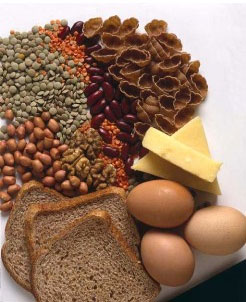 To summarize the subject of proteins;
To summarize the subject of proteins;
• Around 100 special proteins are needed for a single protein to form.
• A protein cannot form if even one of these enzymes (proteins) required for protein synthesis is missing.
• It is not enough for these 100 enzymes to be present at the same time; they must all also be present in a special region inside the cell (a specific region inside the nucleus).
• DNA manufactures the enzymes necessary for protein to form. Proteins are also needed for DNA replication. There is no possibility of one appearing before the other. Both have to be present at the same time.
• A ribosome, which serves as a factory for protein formation, must also exist. But the ribosome is itself made up of proteins. Therefore, proteins are needed for ribosomes to exist, and ribosomes are needed for proteins.
• It is impossible for one to form before the other. Proteins, DNA, the ribosome, the cell nucleus, the mitochondria that produce energy, and all the other organelles in the cell must all exist at one and the same time.
• The enzymes essential for proteins to form have to be sent to the region where their manufacture will be carried out by the cell. Even if enzymes are present, so long as they are not given specific tasks to perform by the cell they will do nothing for that protein. • There has to be a specific temperature and pH value in order for enzymes to be able to carry out reactions. Enzymes do not initiate reactions if they are not at the right temperature and pH level.
• There has to be a specific temperature and pH value in order for enzymes to be able to carry out reactions. Enzymes do not initiate reactions if they are not at the right temperature and pH level.
• Therefore, it is impossible for a protein to emerge so long as all the organelles of the cell do not co-exist together.
• Even if we place all the components necessary for protein in some muddy water, these components can never combine together to constitute proteins. The existence of the cell is a prerequisite for that to happen.
• Amino acids do not normally react with one another. In order to carry out a reaction helper enzymes have to be ready and present inside the cell. Therefore, even if all the requisite amino acids are placed into muddy water they can still never combine spontaneously with other amino acids. The cell is again essential for that to happen.
• Under natural conditions, even if a protein is left inside muddy water, that protein will immediately be broken down, under the effect of various environmental factors, or else will combine with other acids, amino acids or chemical substances and lose all of its properties and turn into another substance that serves no purpose.
• In addition to all this, it will be useful to reiterate the essential conditions for a protein to possess the characteristics of protein:
a. There must be peptide bonds between amino acids
b. All amino acids must be left-handed
c. Only twenty amino acids must be used
d. Amino acids have to be in a specific sequence
e. The protein that forms must have a specific three-dimensional shape.



